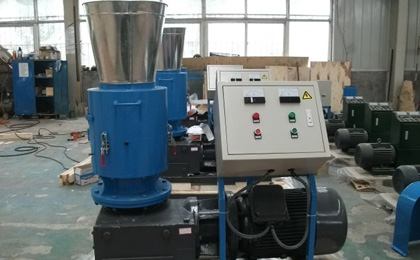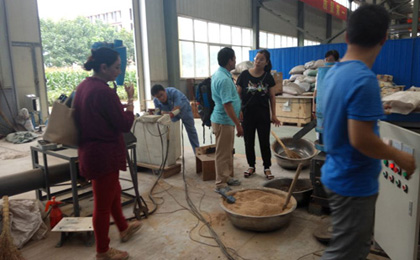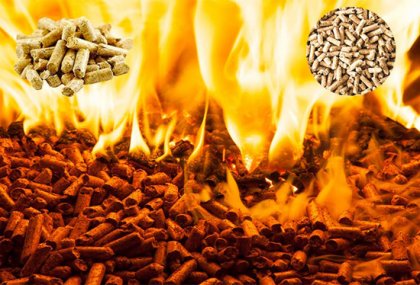Analysis and combustion characteristics of biomass fuels
The so-called biomass fuel is a fuel that includes organic materials such as plant materials and animal waste, and is the new name for the oldest fuel. Generally speaking, we say that the chaff, wood cutting, stem-shaped crops, peanut shells, bark, sawdust, etc., are the fuels commonly used in the agricultural society in the past. As the industry develops slowly, it is abandoned, but now it is found that these fuels are produced. The pollution is far lower than the main fuel of modern industry - coal. So in the past few years there have been many boilers dedicated to biomass fuels, and many coal-fired boilers have been converted into biomass fuels, but few examples of fuels can be fully utilized.
The volatile matter and H content of biomass fuel are high, indicating that it is easy to burn and burns fast. It can adapt to boilers with high water-cooling conditions in the furnace, and at the same time produce more flue gas than coal, so the furnace is better than ordinary coal-fired boiler. Bigger. It is also because of the high content of volatile matter and H, a large amount of water vapor is generated in the fuel, a large amount of heat is absorbed, and the C content is relatively small, so the low calorific value of the biomass fuel is relatively low. The same boilers, such as fuel, are biomass, which requires nearly twice as much fuel as bituminous coal.
Biomass fuel development and combustion characteristics
Biomass fuels are popular as a by-product of agricultural and forestry products. The use of biomass fuels is a process that turns waste into treasure. Biomass fuels come from a wide range of sources and are readily available for boilers in the agro-processing industry. China attaches great importance to the development and utilization of bioenergy. Biomass fuel pellet products are still rarely used in China. We are mainly burning directly, and the fuel combustion status is not optimistic, and the fuel calorific value utilization is still very low. Because biomass fuel itself is considered to be waste utilization, it is not taken seriously from the management of the company to the management of the government for its truly efficient use.

Status of biomass fuel used in coal-fired boilers
In the vast rural areas, the products we used to call biomass fuels were burned in the fields and used as fertilizers to make white smoke everywhere in the field and pollute the environment. When using biomass fuel, most of these units of use do not use the biomass fuel, so the boiler room is often "smoke-smoke" when burning, the fuel is piled up indiscriminately, and the utilization of fuel calorific value is very low. The soot generated during the combustion process often blocks the flue, causing the boiler to burn on the normal fire, causing waste, and the boiler output is often insufficient.
Thermal efficiency test of coal-fired boilers using biomass fuel The boiler thermal efficiency simple test is a way to measure the thermal efficiency of the boiler by means of boiler thermal back-balance. The so-called boiler thermal counterbalance is to measure the energy loss of various parts and forms of boiler operation, and deduct the percentage of these energy losses to obtain the boiler thermal efficiency. This method can better detect the key point of energy waste in the boiler operation process, and can grasp the key to solve the boiler energy efficiency problem through detection and analysis, so as to propose solutions according to local conditions. 5 Suggestions on using coal-fired boilers to improve boiler thermal efficiency According to the above energy loss detection, the main energy efficiency problems of most coal-fired boilers using biomass fuel are: 1. The exhaust gas temperature is very high, generally reaching above 400 °C, and the main biomass fuel continues to burn in the tail pipe; 2. The heat loss of the gas is not completely burned, and the CO content of the tail flue gas is high. Due to the flying of the fuel, the local oxygen supply is lacking, so that the gas is not completely burned. 3. The heat loss of the solid incomplete combustion is high, also because of the fuel flying. And burn, and some do not burn completely into the chimney.
Relative to these problems, the following boiler reform proposals are proposed:
- 1. Strictly control the air volume and furnace negative pressure, reduce the flue gas flow speed, and reduce the fuel fluttering speed.
- 2. Expand the furnace volume to increase the fuel quantity so that the output will not be due to the use of biomass. The fuel is obviously reduced, all the furnace arches are removed, the biomass is easy to ignite, the furnace arch is not very effective, and the ash residue is small, and the grate height can also be lowered.
- 3. The secondary air is added at the exit of the furnace to block a large amount of fuel from flying away. And increase the oxygen content in the smoke path so that the combustion can proceed smoothly.
Conclusion
With the wide application of biomass fuels, the re-election of coal-fired boilers with biomass fuels has become particularly important. The industrialization of biomass fuels will also be formed. It is beneficial to China's current energy utilization structure and is conducive to energy saving. The basic national policy of consumption.






